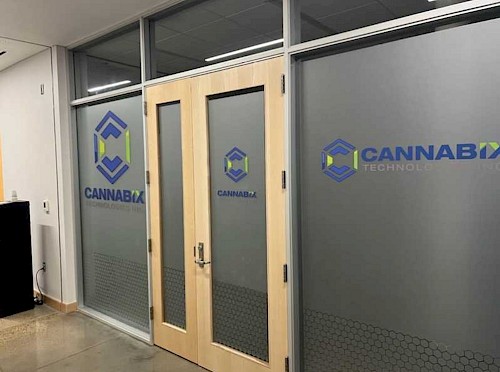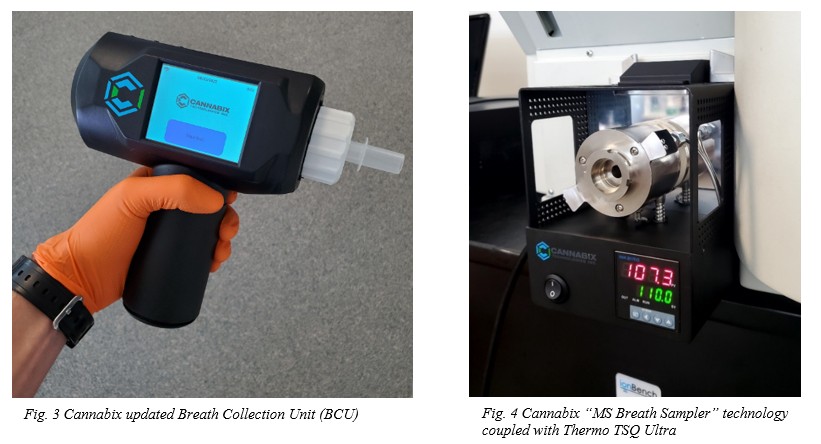News Releases
Cannabix Quantifies Marijuana Breath Samples from Maryland Green Lab – Results Analyzed at North Louisiana Criminalistics Laboratory
January 18, 2024
Vancouver, British Columbia, January 18, 2024 -- Cannabix Technologies Inc. (CSE: BLO) (OTC PINK: BLOZF) (the “Company or Cannabix”) developer of marijuana and alcohol breath testing devices reports that analysis results from the collection of breath samples from a recent “green lab” testing day in Montgomery County, Maryland were successfully analyzed (with delta9-THC detected and quantified from breath samples after smoking and edibles consumption) at a third-party location for the first time. Breath samples taken on January 3, 2024 during the Maryland green lab held by the Montgomery County Police Department were shipped to the North Louisiana Criminalistics Laboratory (“NLCL”) (Fig. 1 and Fig. 2), based in Shreveport, LA for analysis. This represents the first time, such quantification analysis, with human breath samples, collected and analyzed with Cannabix’s proprietary laboratory-based marijuana detection equipment, has been successfully conducted outside of Cannabix’s own labs – marking a critical step to show reproducibility of Cannabix hardware and analysis methods in multiple and independent locations.
The data collected from 11 volunteer subjects (10 smokers and 1 subject who consumed THC infused edibles) showed similar results to those achieved during past green lab studies. The baseline (prior to consumption) delta9-THC breath concentrations were in most cases very low indicating no recent use of cannabis products. Thirty (30) minutes after observed consumption, the delta9-THC concentrations in breath per cartridge increased significantly – with the highest recorded values being around 25 ng/cartridge. After 60 minutes the THC concentrations in breath decreased but remained above baseline values. Subjects were then asked to re-dose after approximately 80 minutes after first cannabis consumption and analysis showed elevated levels of delta9-THC in breath in later time points, after re-dosing, even when compared to the levels observed after initial consumption.
Samples were analysed roughly 48 hours after collection and no obvious adverse effects related to storing or shipping were observed during the analysis process. The calibration curve acquired prior to analysing samples at the NLCL lab was similar to those used at the Company’s Burnaby, BC lab location.
Rav Mlait, CEO of Cannabix stated, “This is significant milestone for our marijuana breathalyzer system as we have now been able duplicate our latest quantification processes - outside of our own laboratories – at NCLC. Administrators at NCLC were able to prepare their calibration curve and duplicate Cannabix’s quantification analysis methods and achieve quantified breath samples for delta-9 THC from smoking and edibles. This marks a major step showing the ability to reproduce of our breath sample testing methods in multiple locations.”
The Company’s handheld Breath Collection Unit (“BCU”) (Fig. 3) and newly developed laboratory “MS Breath Sampler” (Fig. 4) are being used together to provide a new method for drug detection that complements gold-standard mass spectrometry (MS) and significantly simplifies laboratory analysis methods, reduces sample turnaround times (thus minimizing operating costs), while maintaining sensitive, precise results. By comparison, existing and legacy breath and saliva testing procedures require several sample extraction and preparation steps prior to analysis, and analysis itself can take from 1-3 hours per sample. This is expensive and impractical. Also, existing and legacy breath and saliva testing procedures tend to have inefficient, time-consuming collection methods, and recoveries are still often poor. Cannabix instrumentation is designed to be easy-to-use and seamlessly interfaced with techniques that toxicologists are already familiar with, requiring minimal training by all users.
Cannabix continues to test and develop its BCU and MS Breath Sampler to quantify delta-9 THC in human breath samples. Cannabix scientists are using an internal standard to generate a calibration curve for THC quantification in breath samples. Currently, a limit of detection and limit of quantification have been achieved with human subjects in the picogram range. This allows detection of THC from smoking and edibles up to 4+ hours after consumption.

Figure 1.

Figure 2.

Figure 3 and 4.
Disclaimer:
The information in these press releases is historical in nature, has not been updated, and is current only to the date indicated in the particular press release. This information may no longer be accurate and therefore you should not rely on the information contained in these press releases. To the extent permitted by law, Cannabix Technologies Inc. and its employees, agents and consultants exclude all liability for any loss or damage arising from the use of, or reliance on, any such information, whether or not caused by any negligent act or omission.

